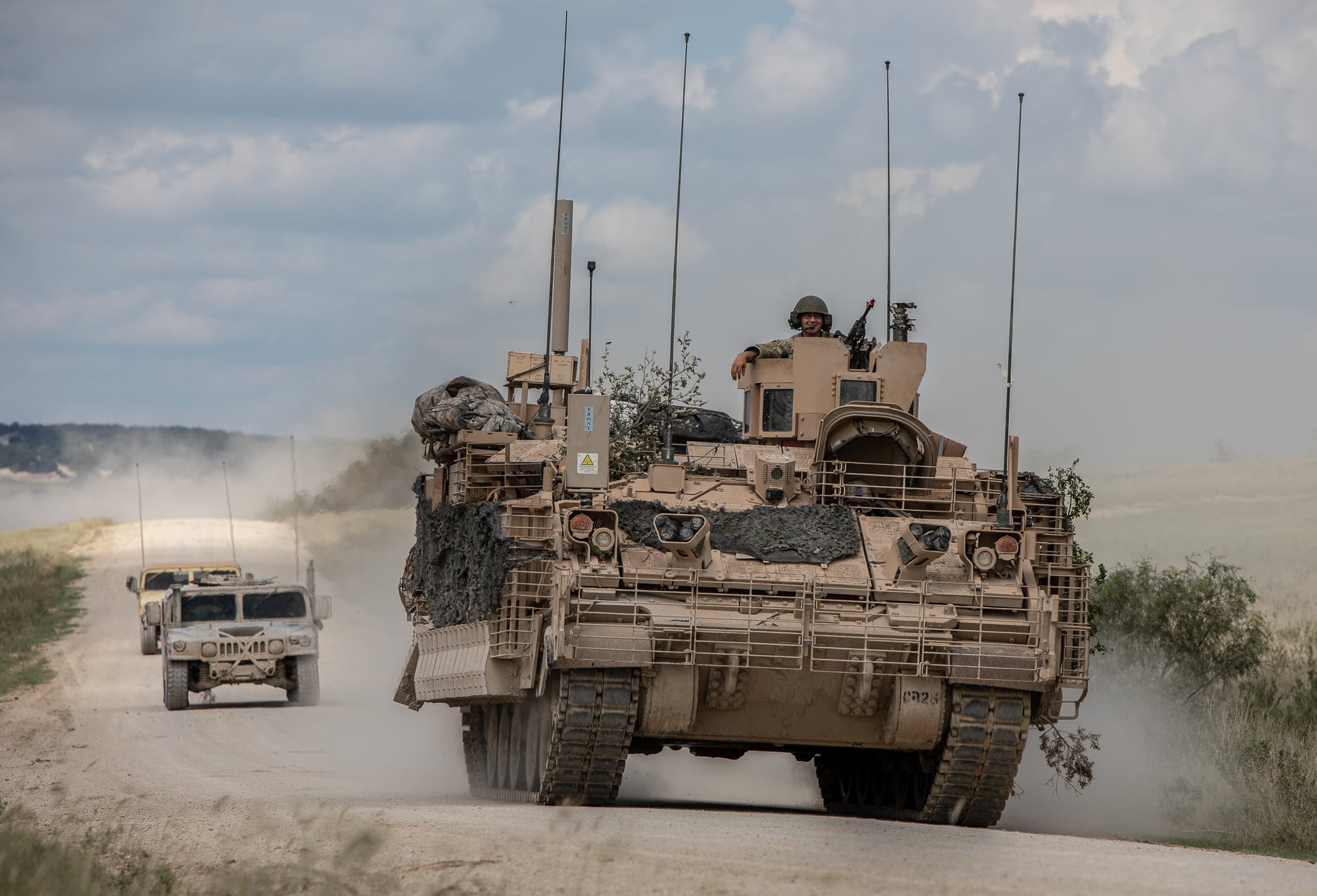JERUSALEM — Israeli defense company Rafael is working to create a network of manned and unmanned armored vehicles, with one acting as a mothership to coordinate the use of their weapon systems against targets.
With such a suite of armored vehicles, an operator could manage drones and a variety of weapons systems. Inside the company’s prototype, several screens display a 360-degree picture of what is happening outside, and a map shows the locations of friendly forces. The mothership vehicle could slave the capabilities of other vehicles who have a better view of a target to adjust and hit the threat.
Rafael said the technology already exists to transform any armored vehicle — from armored personnel carriers to tanks — into this “ultra-modern combat system” that simultaneously acquires and neutralizes multiple targets. But how quickly would armies want to move in this direction?
“I believe many of the forces that will start this program will go in several steps and will not go straight to the complete autonomous capabilities,” said Shmulik O., a former Israel Defense Forces armored corps brigadier general who is now the head of Rafael’s innovation program center. The former officer’s last name is omitted due to his involvement with a sensitive project.
Located at Rafael’s headquarters north of Haifa, the system the firm has developed initially sought to reduce the number of people needed to operate a large armored vehicle while keeping them safe inside the vehicle at all times. With two chairs, one for the mission controller and another who deals with attack and defense management, the system allows for optional autonomous driving. But the designers realized that besides having a computer system that manages many of the tasks previously performed by humans, a third person could be integrated into the vehicle to control other missions.
RELATED

“We understood in the most complicated scenario when it is engaging four targets and different angles, it is the point where the two human crew members need to step back and let the computer do the job, and that is where we are going, part of a bigger discussion of what is the role of ground maneuver, do you still need to have boots on the ground or robots,” Shmulik said.
The U.S. Army is looking for a next-generation combat vehicle as part of its modernization priorities.
“People are trying to visualize where we are taking these capabilities and technology,” Shmulik said. “The level of autonomacy and how to bring it to the customer depends on operational perspectives. The far vision is everyone sees complete autonomous units. So the question is if we go in three steps, or straight to the future.
According to Shmulik, the Israeli military is looking at Rafael’s system.
“We are in a deep discussion with them and others. I must say that every customer is still building their road map [on] how to bring the capability and how to start to bring existing technology into their existing vehicles and units,” he said.
Seth J. Frantzman is the Israel correspondent for Defense News. He has covered conflict in the Mideast since 2010 for different publications. He has experience covering the international coalition against the Islamic State group in Iraq and Syria, and he is a co-founder and executive director of the Middle East Center for Reporting and Analysis.







